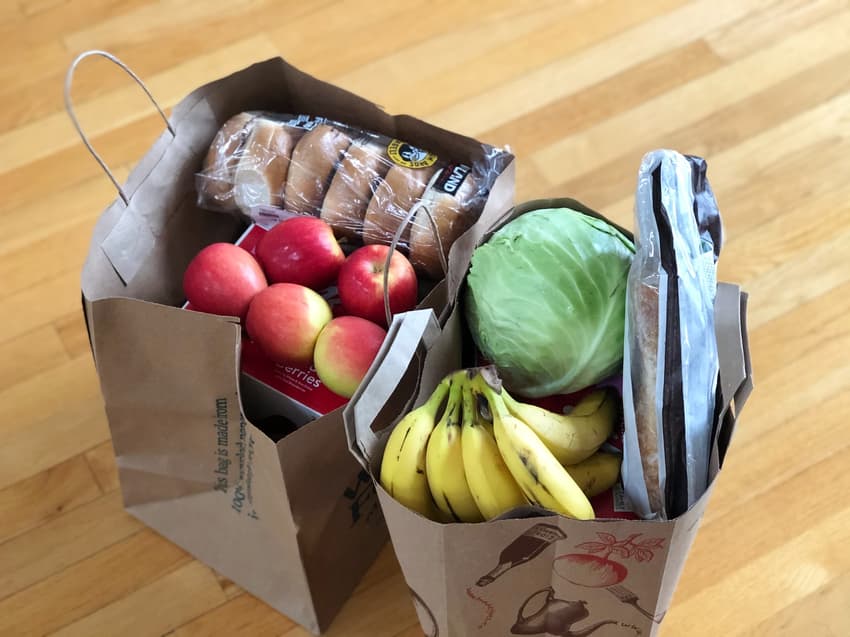High inflation: What's keeping prices high in Austria?

Inflation in the eurozone has been steadily going down, and while the inflation rate decreased slightly in Austria, it is still at high levels. So what is keeping prices high?
In February 2023, Austria's inflation rate stood at 10.9 percent, a slight decrease from January, when it was 11.2 percent, according to recent Statistik Austria data.
It's still higher than the average in the EU (9.9 percent) and much higher than the euro inflation, which was 8.5 percent in February, according to Eurostat.
“The slight decline in inflation from 11.2 percent in January to 10.9 percent in February 2023 is mainly attributable to less pronounced price pressure on household energy and fuels,” said Statistics Austria Director General Tobias Thomas.
READ ALSO: Cost of living: 45 ways to save money in Austria
"By contrast, the price spiral continued to turn in restaurants. Inflation also continued to be felt at supermarket checkouts, with food prices rising by 16.5 percent year-on-year," he added.
So what is keeping prices high?
Higher costs for housing, water and energy (+16.5 percent compared to February 2022; including district heat +89.2 percent, gas +63.5 percent, solids fuels +76.0 percent, heating oil +29.3 percent, electricity +3.1 percent) turned out to be the most critical price driver, according to Statistik Austria.
They were followed by food and non-alcoholic beverages (+16.2 percent; food +16.5 percent, non-alcoholic beverages +14,0 percent).
The more expensive foods include meat, bread and cereal products, vegetables and fruit. However, products such as milk, cheese, eggs, oils, and fats have decreased slightly. When it comes to beverages, coffee was the main contributor to price rises this month.
READ ALSO: EXPLAINED: 10 ways to save money on your groceries in Austria
The third strongest price driver was restaurants and hotels (+13.4 percent; restaurants +13.4 percent, hotels +13.1 percent). Finally, transport showed price increases of 10.9 percent (fuels +13.6 percent), with fuel prices still high and airline tickets costing significantly more than in January.
While rents rose by an average of 6.3 percent in February, less than the general inflation rate, the cost of maintaining housing increased by 17.9 percent, mainly due to high material costs (up 21.2 percent).
Comments
See Also
In February 2023, Austria's inflation rate stood at 10.9 percent, a slight decrease from January, when it was 11.2 percent, according to recent Statistik Austria data.
It's still higher than the average in the EU (9.9 percent) and much higher than the euro inflation, which was 8.5 percent in February, according to Eurostat.
“The slight decline in inflation from 11.2 percent in January to 10.9 percent in February 2023 is mainly attributable to less pronounced price pressure on household energy and fuels,” said Statistics Austria Director General Tobias Thomas.
READ ALSO: Cost of living: 45 ways to save money in Austria
"By contrast, the price spiral continued to turn in restaurants. Inflation also continued to be felt at supermarket checkouts, with food prices rising by 16.5 percent year-on-year," he added.
So what is keeping prices high?
Higher costs for housing, water and energy (+16.5 percent compared to February 2022; including district heat +89.2 percent, gas +63.5 percent, solids fuels +76.0 percent, heating oil +29.3 percent, electricity +3.1 percent) turned out to be the most critical price driver, according to Statistik Austria.
They were followed by food and non-alcoholic beverages (+16.2 percent; food +16.5 percent, non-alcoholic beverages +14,0 percent).
The more expensive foods include meat, bread and cereal products, vegetables and fruit. However, products such as milk, cheese, eggs, oils, and fats have decreased slightly. When it comes to beverages, coffee was the main contributor to price rises this month.
READ ALSO: EXPLAINED: 10 ways to save money on your groceries in Austria
The third strongest price driver was restaurants and hotels (+13.4 percent; restaurants +13.4 percent, hotels +13.1 percent). Finally, transport showed price increases of 10.9 percent (fuels +13.6 percent), with fuel prices still high and airline tickets costing significantly more than in January.
While rents rose by an average of 6.3 percent in February, less than the general inflation rate, the cost of maintaining housing increased by 17.9 percent, mainly due to high material costs (up 21.2 percent).
Join the conversation in our comments section below. Share your own views and experience and if you have a question or suggestion for our journalists then email us at [email protected].
Please keep comments civil, constructive and on topic – and make sure to read our terms of use before getting involved.
Please log in here to leave a comment.